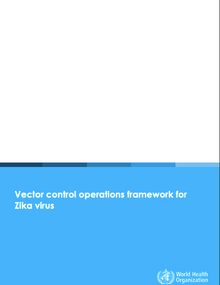Zika virus is primarily transmitted by the Aedes species of mosquito which is also responsible for the spread of dengue, Chikungunya and yellow fever viruses. In most areas, the primary vector of these viruses is Aedes aegypti, with Aedes albopictus a proven or potential vector in some settings. Well-implemented vector control against Aedes using existing tools effectively reduces the transmission of viruses spread by these vectors. Pilot studies are being undertaken on new tools which have potential for future reductions in Aedes populations. Efforts to prevent Zika virus transmission should prioritise the intensification of control measures against Aedes using existing tools. Although one recent study1 has examined the effectiveness of community mobilization for dengue prevention, vector control tools for Aedes control have not yet been evaluated for disease impact.
For rapid impact, surveillance and control should build on existing national structures rather than seeking to establish new or parallel structures. In many countries of Africa, this will entail augmenting existing capacity in malaria control programmes. In some countries of the Americas, South-East Asia and the Western Pacific existing dengue control programmes can be built on. Such leveraging of existing human, infrastructure and organizational resources will facilitate more rapid and effective response to the threat or an outbreak of Zika virus disease. Additional impact on other significant Aedes-borne diseases may also result.
|

